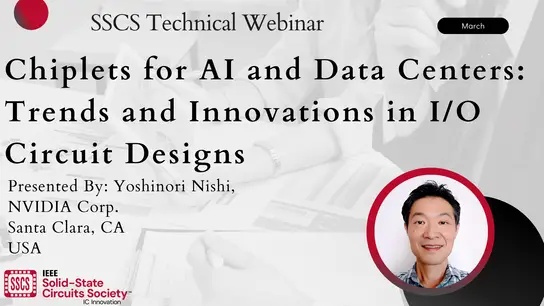-
Members: FreeSSCS
IEEE Members: $10.00
Non-members: $20.00Pages/Slides: 104
01 May 2021
Abstract - Applications, such as autonomous driving, rely on the perception of the environment around us based on extensive sensing. While most signals in the nature are not changing quickly and can be captured with relatively low-bandwidth sensors, most require low-noise sensors. This tutorial goes over the main sources of noise with a focus on capacitive and image sensors. Advanced noise-reduction circuit techniques, such as chopping, correlated-double sampling, and Boxcar sampling, are explained.
Biography - Pedram Lajevardi received B.A.Sc. degree in Electrical and Computer Engineering from the University of British Columbia and MS and Ph.D. in Electrical Engineering from Stanford University. He joined Bosch Research and Technology Center, Sunnyvale, CA in 2012 working on CMOS image sensors. Since 2015 he has been serving as a member of the technical program committee of ISSCC. His research interests are low-power and high-precision sensor interfaces.
Biography - Pedram Lajevardi received B.A.Sc. degree in Electrical and Computer Engineering from the University of British Columbia and MS and Ph.D. in Electrical Engineering from Stanford University. He joined Bosch Research and Technology Center, Sunnyvale, CA in 2012 working on CMOS image sensors. Since 2015 he has been serving as a member of the technical program committee of ISSCC. His research interests are low-power and high-precision sensor interfaces.
Primary Committee:
SSCS


